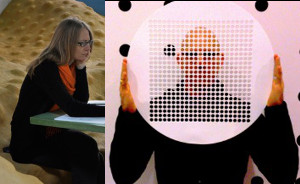Collapse: clouds of affective dust and the abstract life of objects
All objects emerge from a cloud of activities, virtual pressures and situated encumbrances that precede their status as finished things. Once emerged, traces of their history linger in the object, signposting a range of past and future potentials that are largely inaccessible – or just unnoticed. Objects, in short, always shimmer with connections beyond themselves, through which they are part of ecologies that render them both meaningful and active. We would call this shimmering their ‘abstract life’. However, this life is rarely identified overtly, and tends to linger in the background, rendering their shimmering vitality more mute than manifest.
This paper is interested in how that abstract life can become palpably evident through various forms of collapse, where a fallout throws a kind of dust into the lingering cloud – offering visibility, or material presence, to the otherwise largely invisible, abstract life of things.
We will touch upon a series of examples, from the World Trade Centre collapse in the attacks of 2001, to the collapse of computational operations and perceptual models. These examples will lead toward experiments in image making – specifically through using panorama software applications on the iPhone – in which a collapse of the programmed panoramic logic creates ‘glitches’, throwing into question the status of the image and their relationship to perception, amongst other things. These experiments will be discussed in order to demonstrate how collapse might operate as a specific technique inside diverse creative practices (from image making to making architecture). By generating clouds of affective dust, related techniques can bring the abstract ‘life’ of objects flickering into the foreground, allowing the agency of the inanimate to shine.
Pia Ednie-Brown is Associate Professor and Higher Degrees by Research Director in the School of Architecture and Design at RMIT University, Melbourne, Australia. She has a creative research practice, onomatopoeia (http://onomatopoeia.com.au/practice), and has edited two books Plastic Green: designing for environmental transformation (RMIT Press, 2009) and The Innovation Imperative: Architectures of Vitality (Wiley, 2013). Her academic writing has been published internationally.
Jondi Keane is an arts practitioner, critical thinker, Senior lecturer and Associate Head of School (Technology and Environments) at Deakin University. Over the last three decades he has exhibited, performed and published in the USA, UK, Europe and Australia. His research interests include contemporary art practices, particularly performance-installation and collaboration as well as contemporary art and cultural theory, theories of cognition and the philosophy of perception, experimental architecture, and the way in which the creative practices can contribute to interdisciplinary inquiries and collective concerns.
